2023 Q1 Blockchain Commons Report
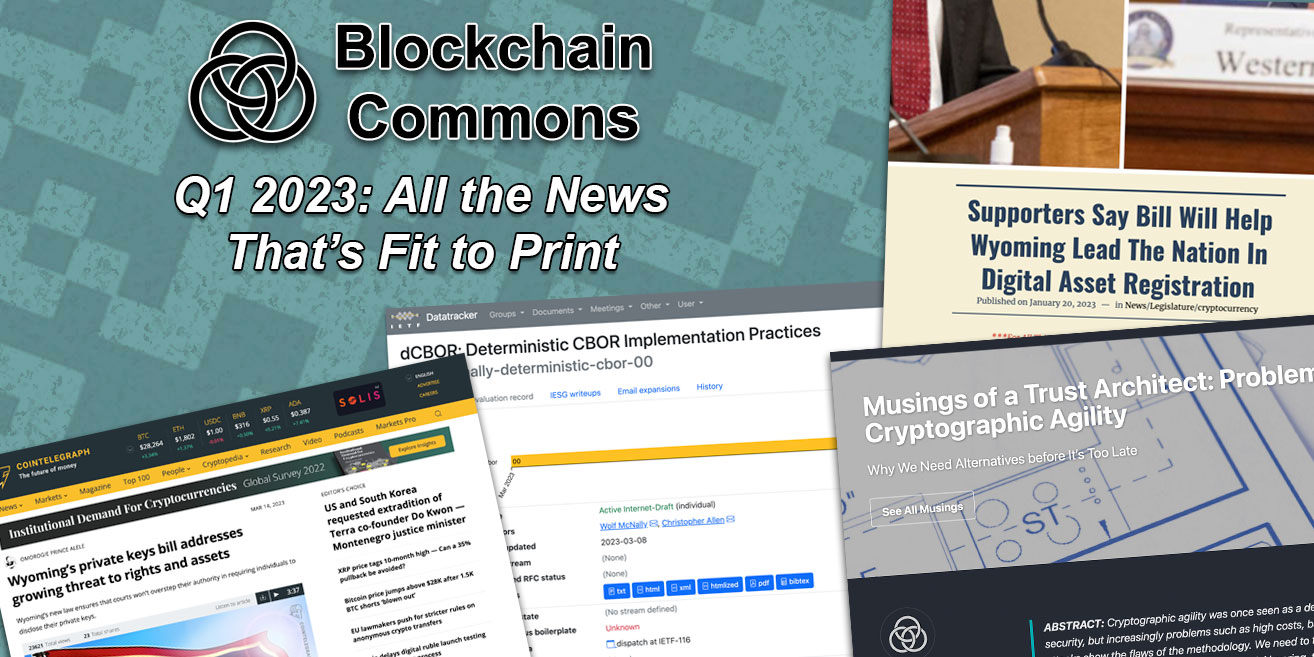
2023 Q1 in Brief
In brief, our work Blockchain Commons work this quarter included:
- Foundations
- dCBOR
- Wyoming Legislation
- Musings about Architecture
- Web Sites
- References
- Spotbit
- Packaging
- Monitoring
- Community Adoption
- Uniform Resources
- Animated QRs
- International Standards
- Feedback
- Community Work
- Developer Meetings
- Silicon Salon 3
- Looking Forward
Continuing to Firm Up Our Foundations
As was appropriate for the start of the year, Blockchain Commons spent considerable effort in Q1 firming up its foundations.
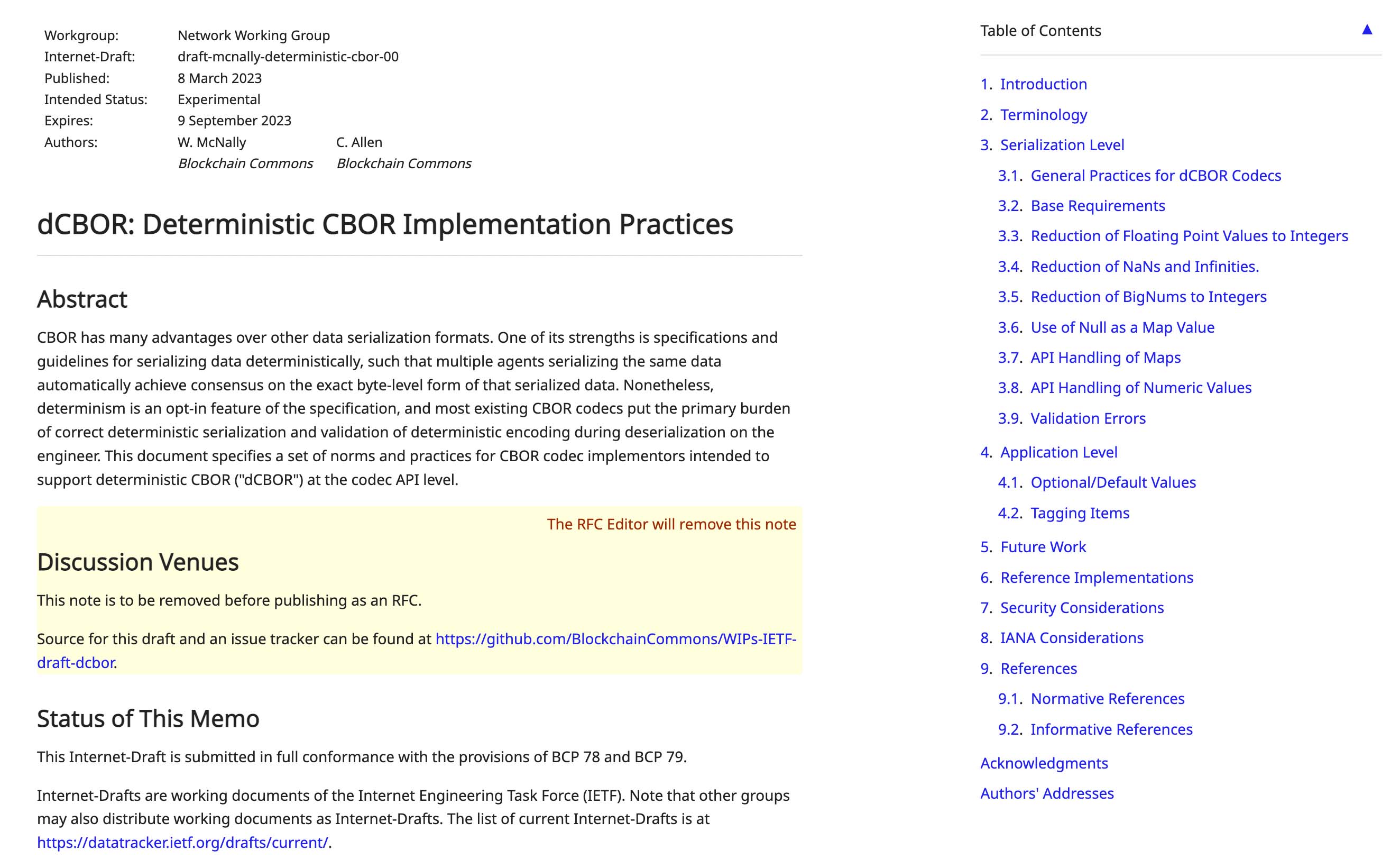
dCBOR. Some of our foundations are technical, and so in Q1 we returned to CBOR, a data format that we’ve long used as the basis of our own specifications such as Uniform Resources. Our big advance was the debut of dCBOR, a deterministic version of CBOR that’s lightly supported in the CBOR RFC, but which isn’t fully defined (which is problematic for a deterministic language!). Our dCBOR Internet-Draft has been submitted to IETF, and it’s already implemented in our Rust and Swift libraries for dCBOR as well as in a validation and diagnostic tool for the command line.
Wyoming Legislation. Some of our foundations are legislative, because it’s just as important to build a legal foundation for self-sovereign control of identity and digital assets as it is to build that technical foundation. Much of our advocacy work to date has been in Wyoming, who is leading the way in the United States; we were please to see them pass new laws in early 2023 protecting private keys and allowing registration of digital assets for legal clarity.
To celebrate our continuing advocacy work, we’ve released a whole advocacy website, which includes links to all of our more recent testimony to various civic & governmental organizations. (We’re still working on the site and plan for more to come including links to our advocacy videos and articles.)
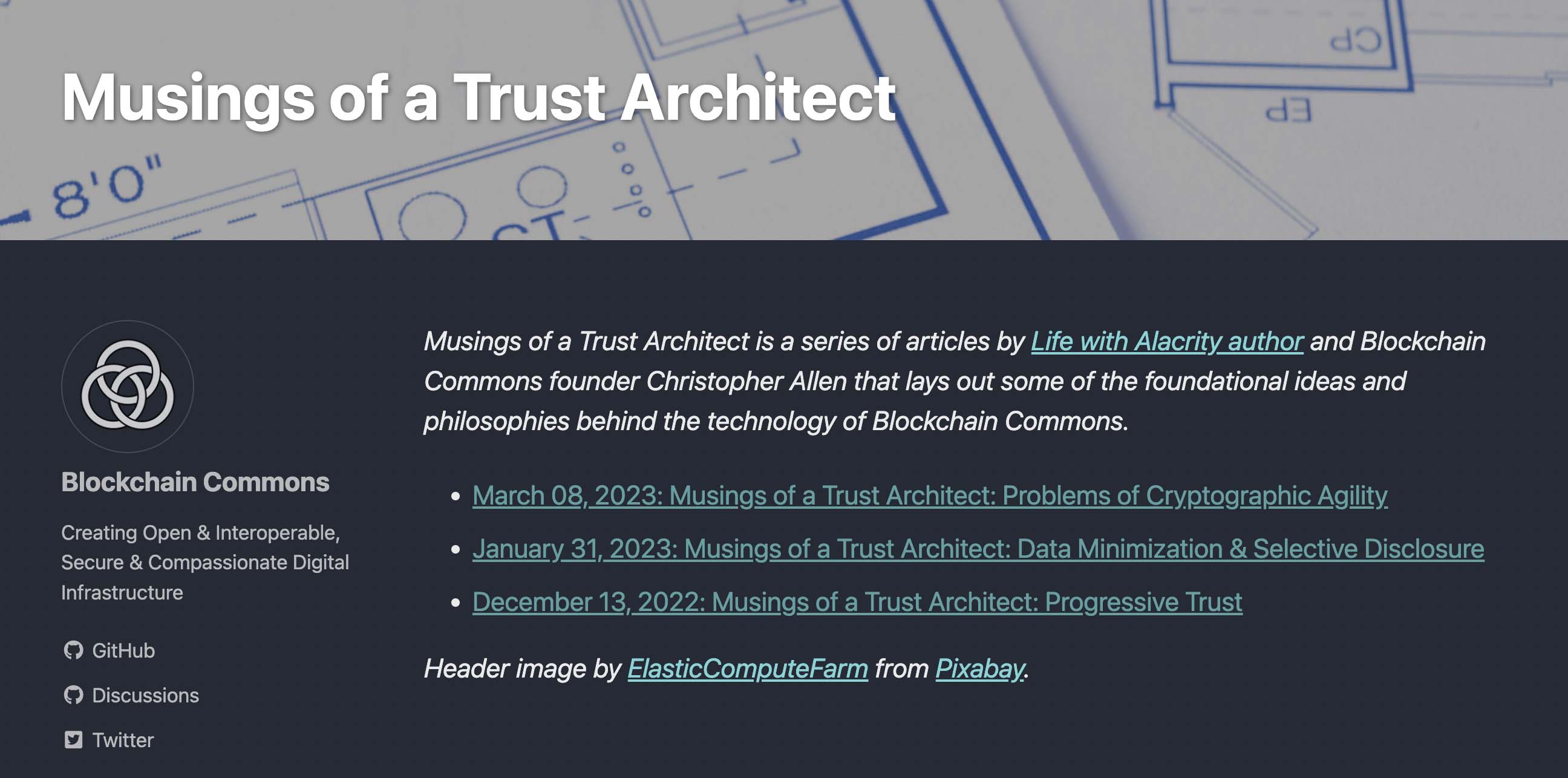
Musings about Architecture. Ultimately, any technical specifications and any legislative support is based on our foundational ideas for self-sovereign architectures. Christopher has begun writing about these architectural ideas in a series of articles called Musings of a Trust Architect, with topics to date including Progressive Trust, Data Minimization & Selective Disclosure, and Cryptographic Agility. Take a look at some of the core concepts underlying our specifications and the legislature we advocate for!
Web Updates. Much more pragmatically, we’ve also made some updates to our web foundations in Q1. We did a full update of our website, to bring it over to Minimal Mistakes for easier updating and to give it an attractive dark theme. We also created new announcements lists for Gordian Developers and Silicon Salon. If you’re interested in either topic, we encourage you to sign up for the low-volume announcement list, to ensure that you always see info about upcoming meetings
Maintaining Our References
Firming up our foundations also requires our continued support for existing reference apps and other exemplars that we’ve created to demonstrate our specifications and our architectural ideas.
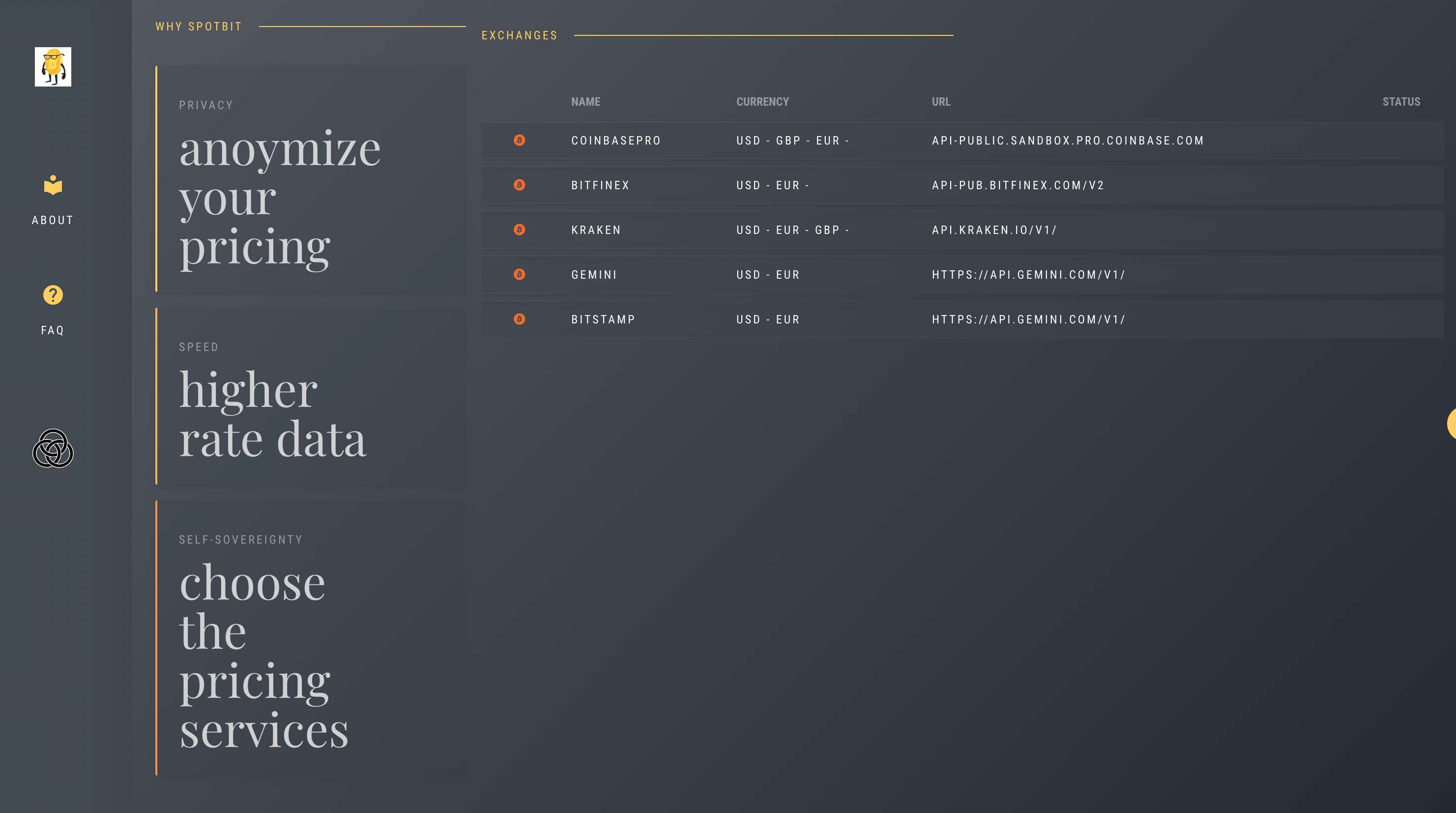
Spotbit. Our pricing microserver has been considerably refactored over the last several months, improving its efficacy under Tor. This goes to the core of our initial goals for Spotbit. By supporting Tor, Spotbit creates privacy in what had previously been a big gap for privacy in Bitcoin: looking up prices. We’ve also produced a roadmap for future work. Improvements are still ongoing.
Packaging. Obviously, our reference apps are only useful if they’re accessible, so we’ve been working on packaging many of our CLI references to make them easy to install on a variety of OSes. To date, we’ve put together packages for Tails. In the next quarter, we expect to expand our packaging work to Homebrew for the Mac as well.
Monitoring. For those references apps like Spotbit and Esplora that run on the web, we also need to maintain stability. In Q1 we improved on that by adding monitoring that alerts us when a service goes down. Mind you, these are still reference apps, not stable enough to be the sole source for any professional deployment, but we’re happy to not only demonstrate their usability, but also to be one of many service providers who each offer their own distributed versions of these apps. If you’d like to help in this decentralization work, please contact us.
Community Adoption
Ultimately, the success of any of our initiatives is dependent on them being adopted.
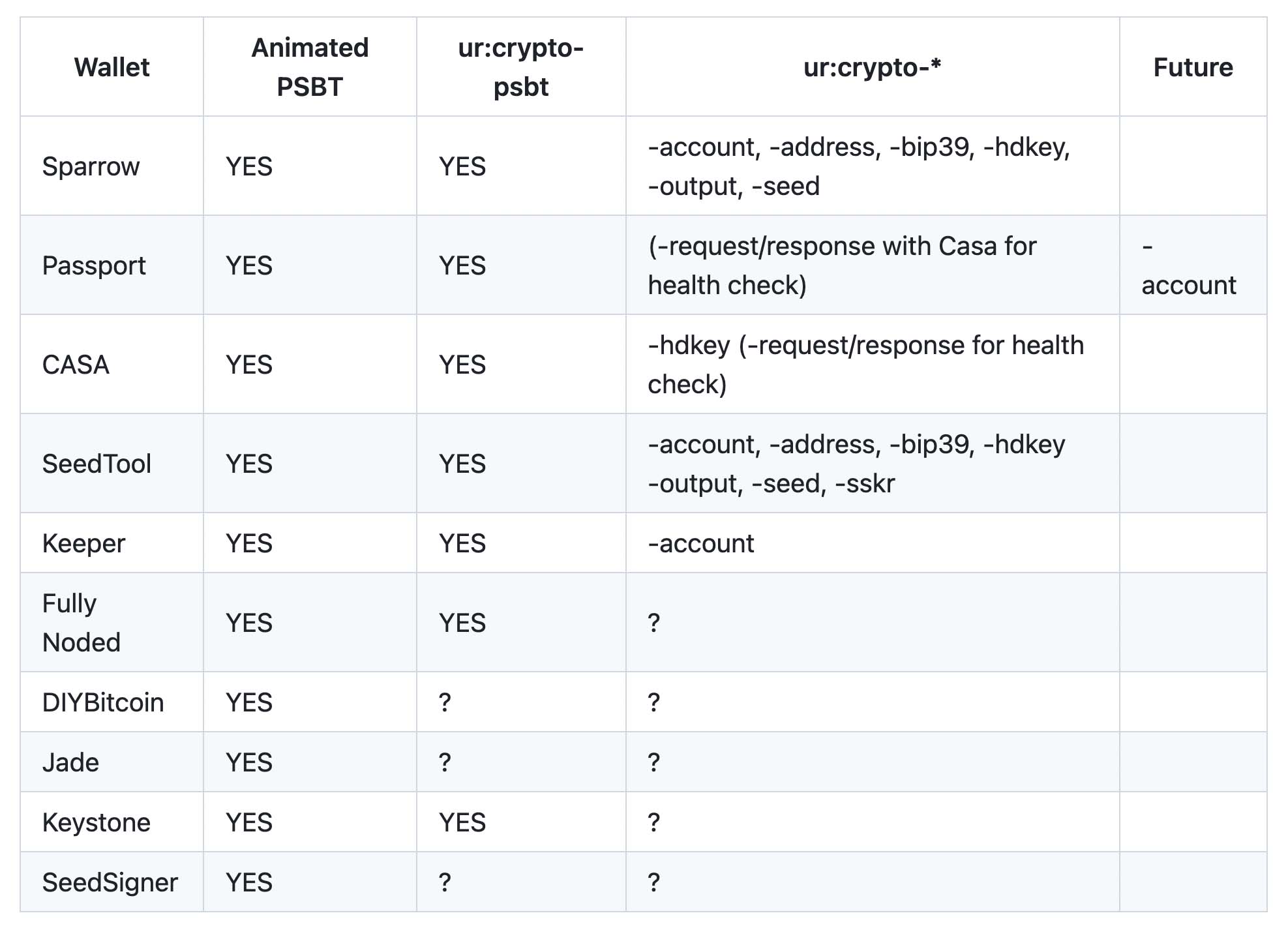
Uniform Resources. Uniform Resources, or URs, represent one of our earliest specifications. They’re a way to encourage interoperability in the digital-asset ecosystem while simultaneously formatting data in a self-describing way. Our recent surveys have shown URs now in use by at least 10 different wallets!
Animated QRs. One of the reasons that URs received such quick adoption is that they enabled the use of Blockchain Commons’ Animated QRs, which are needed to be able to reliably transmit PSBTs across Airgaps. Our new Animated QRs Page and video discusses why airgaps, PSBTs, and ultimately Animated QRs are important.
International Standards. We’ve also begun extensive work with international standards organizations to bring our specifications to a larger audience. Though we’ve presented to W3C, most of work has focused on our dCBOR Internet-Draft and Gordian Envelope Internet-Draft, both for IETF. We also presented to IETF Dispatch in late March, with the goal of finding the best paths forward.
Feedback. Obviously, work of this sort results in feedback, and we’ve been making changes to both our Gordian Envelope spec and some of our more foundational UR types as a result, with changes to dCBOR still to come. One of our core updates of recent weeks has been a definition of the eight core tags for Gordian Envelopes: leaf, envelope, assertion, known-value, wrapped-envelope, digest, crypto-message, and compressed. Thanks to everyone for great feedback to help us produce a solid specification that should improve privacy and self-sovereign control of digital assets!
Community Work
Of course a community is something that must be continuously nurtured and grown. We continued to do so in Q1.
![]()
Silicon Salon 3. Q1 saw our third Silicon Salon, which included our first pure cryptographic presentation, on “A Fast Large-Integer Extended GCD Algorithm”, courtesy of Kavya Sreedhar. The full info on Silicon Salon 3 is available online.
Developer Meetings. We were also thrilled to get our Gordian developer meetings back on track this quarter. They’re now running the first Wednesday of the month every month, with occasional other meetings to supplement these regular gatherings, such as a meeting we held in February on QR & UR signing. Take a look at our new meetings page for summaries and presentations from our recent meetings and sign up for our Gordian Developer announcements list to get invitations for upcoming meetings.
Looking Forward
We’ve of course got plenty planned for the future, including continuing work on our Google Envelope and dCBOR drafts, a new look at NFCs in digital-asset architecture, and lots of meetings to continue our focus on community work. That includes our monthly developer meetings, an upcoming patron meeting, Silicon Salon 4 on May 3, and attendance at IETF 117 in San Francisco this July. If you have a great proposal for Silicon Salon 4 we might still be able to fit it in, or alternatively you can now register.
We also remain dedicated to releasing reference apps in both Rust & Swift, but are looking for community help to support Kotlin as well. Mail us if you’d like to be involved. Finally, we haven’t forgotten CSR, and are hoping to see a first release this coming quarter.
But that’s all for Q2! We’ll tell you about it in about three months!